My chicken wing recipes always start with a little secret I picked up in cooking school: brining. But anyone can do this. You start by grabbing a large bowl and mixing water, salt, sugar, and your favorite spices. Take those wings and give them a dip in the brine. Then let your brined chicken wings hang out in the fridge for hours.
Once they’ve marinated and absorbed all those amazing flavors, rinse off, pat dry, and give them another sprinkle of spices. Now it’s showtime! Fire up the grill or preheat the oven, and cook those chicken wings until they’re crispy and golden.
Of course, that’s not the be-all and end-all to brining wings and cooking them. In this article, I’m going to be your wing guru. I’ll walk you through the full deets of making brined chicken wings that’ll have everyone begging for your recipe.
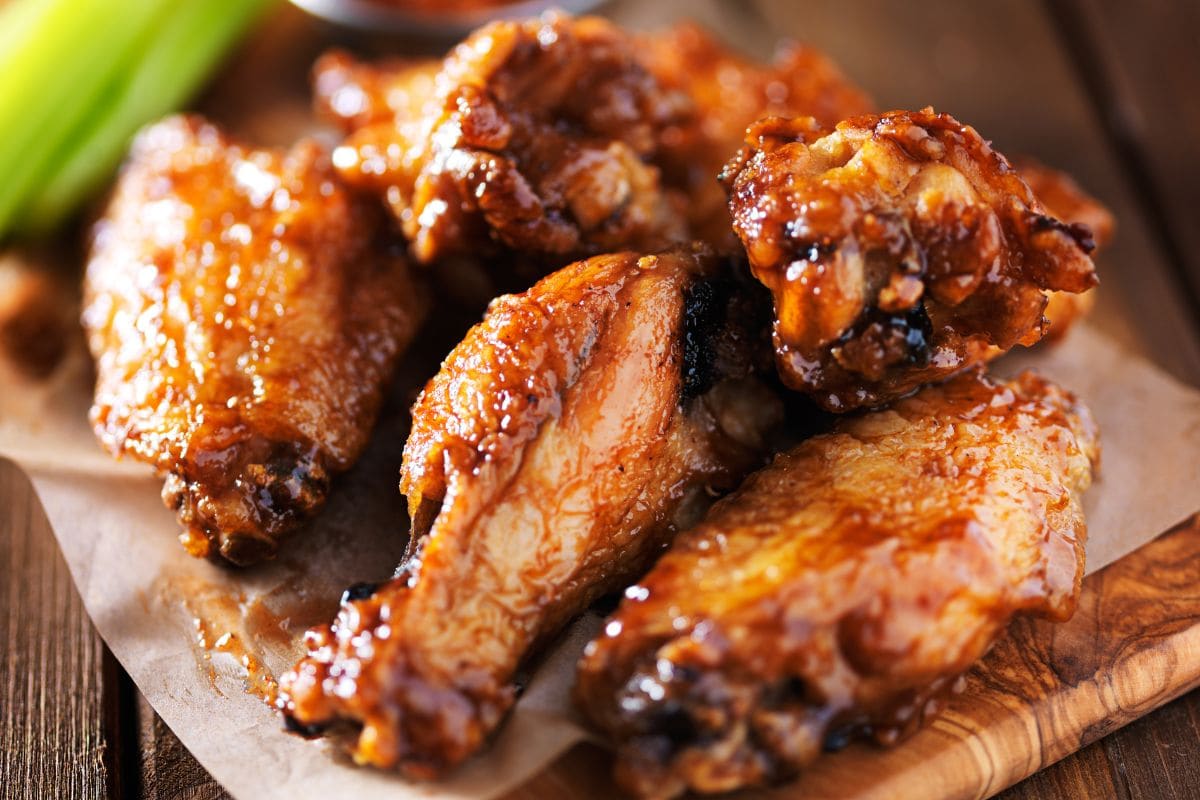
To brine chicken wings means to soak them in a mixture of kosher salt and water. Yeah, a brine for chicken wings is just a mix of that. Any other fancy ingredient is extraneous. Of course, you can replace water with beer for beer-brined chicken wings. The beer makes the wings moist and creates a more flavorful brine.
But how much salt are we talking about? Well, it’s up to you. A standard ratio for meat is 1 cup of salt (or 16 tablespoons) to 1 gallon of water.
Without mincing more words, let’s kick our chicken wing brine recipe off with the first step:
Now, before we dive into the brine action, we’ve got to make sure those chicken wings are ready to soak up all that flavor. Here’s what you have to do:
Start by giving those wings a good rinse under some cool water. This helps get rid of any loose bits and pieces hanging around.
Grab a bunch of paper towels and pat those wings dry. I always like them nice and dry so they absorb all the brine goodness.
If you’re feeling fancy, sprinkle some of your favorite seasonings on the chicken wings before brining them. It’s totally up to you and your taste buds. This step isn’t mandatory, but it can add an extra kick of flavor.
It’s time to get down with the brine for chicken wings. And here’s how to whip up that epic flavor potion:
First, grab yourself a container that can handle the wing action. It can be a large bowl, a plastic bag liner, or a food-grade bucket, depending on how many wings you’re brining.
But make sure you have a container that’s clean and spacious enough to comfortably hold all the wings and the brine without any overflow or overcrowding issues. We don’t want any messes here!
Add some kosher salt to the container. Don’t substitute this with table salt. They’re entirely different. Here’s the best-selling kosher salt if you don’t know where to find some.
You’re adding, of course, based on the amount of water you’ll be using and your taste buds. As mentioned earlier, the usual ratio is 1 cup of salt per gallon of water. But feel free to adjust it to your liking. We’re aiming for that salty ocean vibe, but don’t go too crazy unless you’re a salt fanatic! Too much salt can be very unhealthy for your body. Remember!
Next up, fill up the container with cold water, making sure the salt dissolves completely. Cold or cool water works just fine for this part. Give it a good stir to ensure the salt spreads its magic evenly throughout the brine. We want every drop to count!
Are you feeling adventurous? You can get creative and add some extra flavor to the brine. You can toss in some sugar to balance the saltiness or throw in your favorite spices and herbs to crank up the taste. This is your chance to go wild and experiment with different flavors. Let your taste buds be your guide!
Dip a clean spoon into the brine and give a tiny sample a taste. Remember that the flavors might intensify when you add all those ingredients during the brining process. So don’t go all-out with the salt just yet. Better to play it safe and adjust if needed.
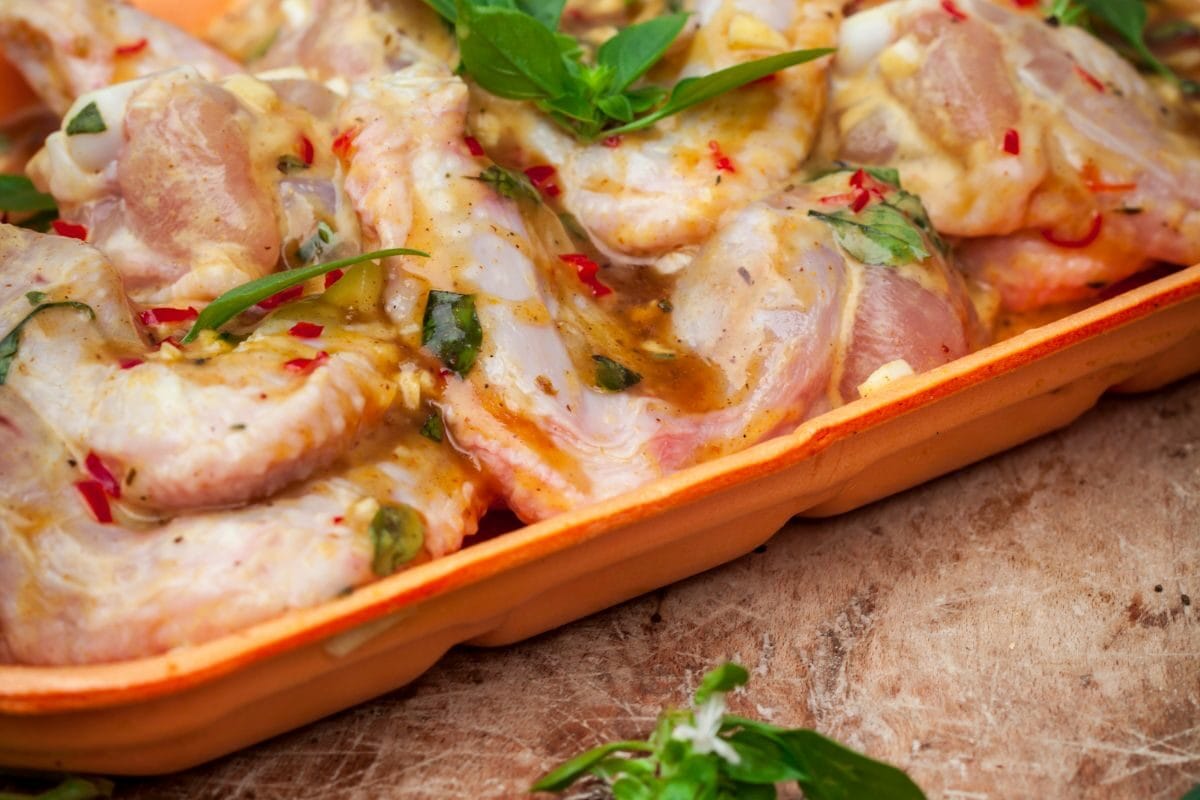
Alright, it’s time to get those chicken wings in the brine and let the magic happen! Here’s how to make sure they dive right in and soak up all that salty deliciousness:
Take those awesome wings and plop them into the container filled with the brine. Make sure each chicken wing gets a good swim and is completely covered in that tasty, salty liquid. Drop them in one by one until all the chicken wings are having a blast in the brine.
If any wing tries to pull a Houdini and float to the surface, gently push it down with a clean utensil or your hands. We want every chicken wing to be part of the brine party, so ensure they all stay fully submerged.
If you’re using a bowl or deep dish, you can put a clean plate or something heavy on top of the chicken wings to keep them fully soaked in the brine mixture. This helps ensure every chicken wing gets equal love and no wing gets left out. If you’re using a bag, squeeze out the extra air, seal it up tight, and ensure the chicken brine is all around those wings.
When you’re brining chicken wings for more than two hours, it’s super important to keep them chilling in the fridge throughout the whole brining process. That cool temperature keeps things safe and helps those flavors mingle and do their thing.
So, after you’ve dunked them in the chicken wing brine, pop them right into the fridge. That way, they stay nice and cold, and you can avoid any unwanted bacterial party crashers.
Refrigeration is all about keeping things fresh and minimizing any icky stuff that can make you sick.
Now it’s time for the real deal! Let those wings chill and marinate in the brine. Depending on how bold you want the flavor, you can let them hang out in the chicken wing brine for 1 to 24 hours. As for me, I like to have my wings brined overnight.
Alright, let’s talk about cooking up those brined chicken wings to perfection. But shouldn’t we first talk about what we’ll need?
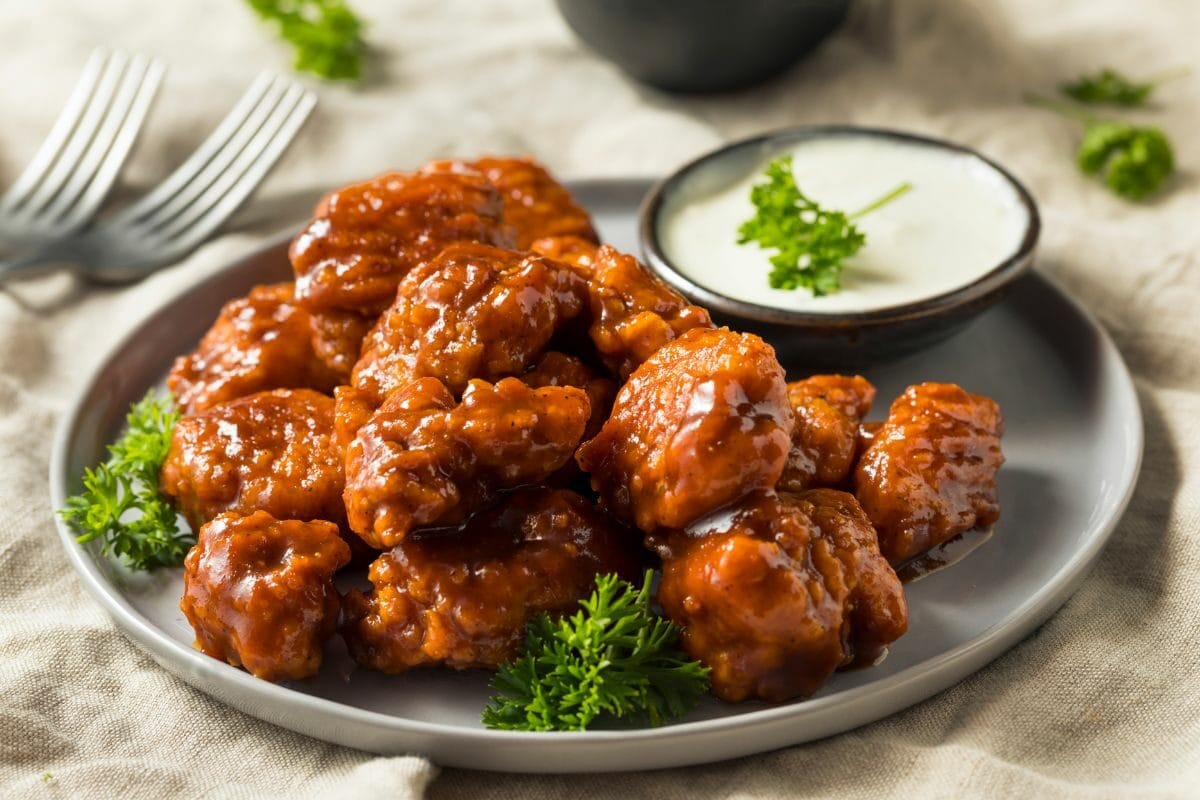
Now, let’s cook up some finger-licking goodness with those brined chicken wings!
The answer is the salt (preferably kosher salt) does make the meat tender and, of course, tastier.
First, when you dunk that meat in a salty water solution, the meat soaks up the liquid like a thirsty sponge. If you just soak it in plain water, it won’t absorb as much. But it all changes when it’s saltwater because of some fancy science called osmosis.
When you cook the brined chicken wings, it loses some water like regular meat because the muscle fibers shrink and squeeze out the moisture. That’s why you hear that sizzle in the pan.
But here’s the cool part: since the brined chicken wings started with more water, it ends up juicy and succulent. It’s like pure magic!
Secondly, the salt in the brine works on those muscle fibers. Even if you want to go for a dry chicken wing brine without water, the salt does its thing. It loosens up those tight coils of muscle, making the meat tender and easy to sink your teeth into.
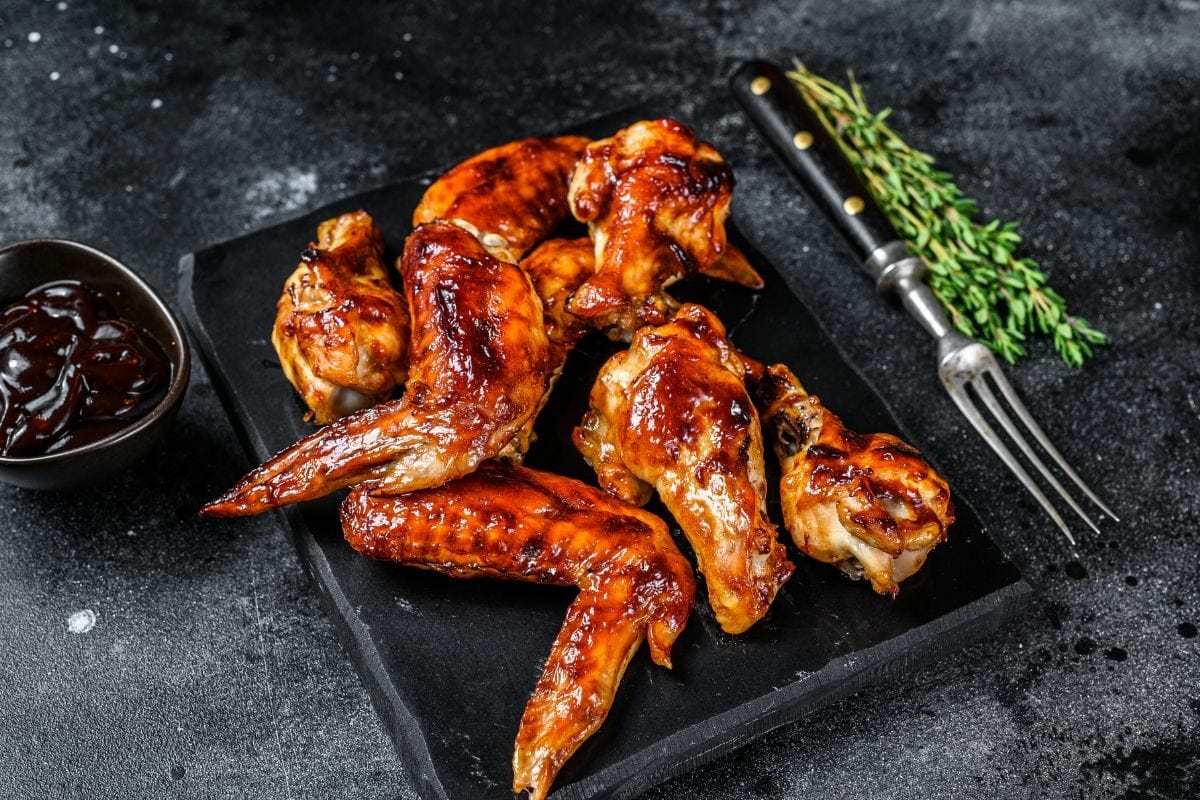
While it’s usually best to keep those chicken wings cool in the fridge during brining to play it safe, I get it if you’re in a pinch and don’t have refrigeration available.
So, if you want to give it a go without chilling, here are a few things to keep in mind:
Since leaving the wings at room temperature can invite unwanted bacterial guests to the party, keep the brining time on the shorter side. Try to aim for a max of 2 hours to minimize any risks.
Instead of lukewarm water, go for something colder, like cool or ice-cold water. The lower temperature can help slow down those pesky bacteria, buy you more time, and keep things in check.
If the fridge isn’t an option, scout out the coolest area in your place, like your basement or lower floors. Make sure to keep those wings away from direct sunlight. We want to create a mini winter wonderland for them to hang out in.
Stay vigilant during the brining process. Check on the wings and the brine regularly. If you spot spoilage, funky smells, or strange colors, don’t take any chances—toss that chicken wing brine and those wings pronto. Safety always comes first.
Now, let me be clear: brining without refrigeration does come with some risks. So if you can, go for the fridge method to be on the safe side. But if you can’t wait or don’t have access to a refrigerator, follow these tips, be cautious, and trust your instincts.
Oh, for sure! Dry brining works wonders on wings too! The chicken wing brine doesn’t have to be wet brine solution. With dry brining, all you’ve got to do is season those wings with a good amount of salt and spices, then pop them in the fridge to chill out. The salt does its magic, pulling out moisture, adding flavor to the meat, and making the texture extra awesome.
Let’s break it down and see what’s up with these brining methods:
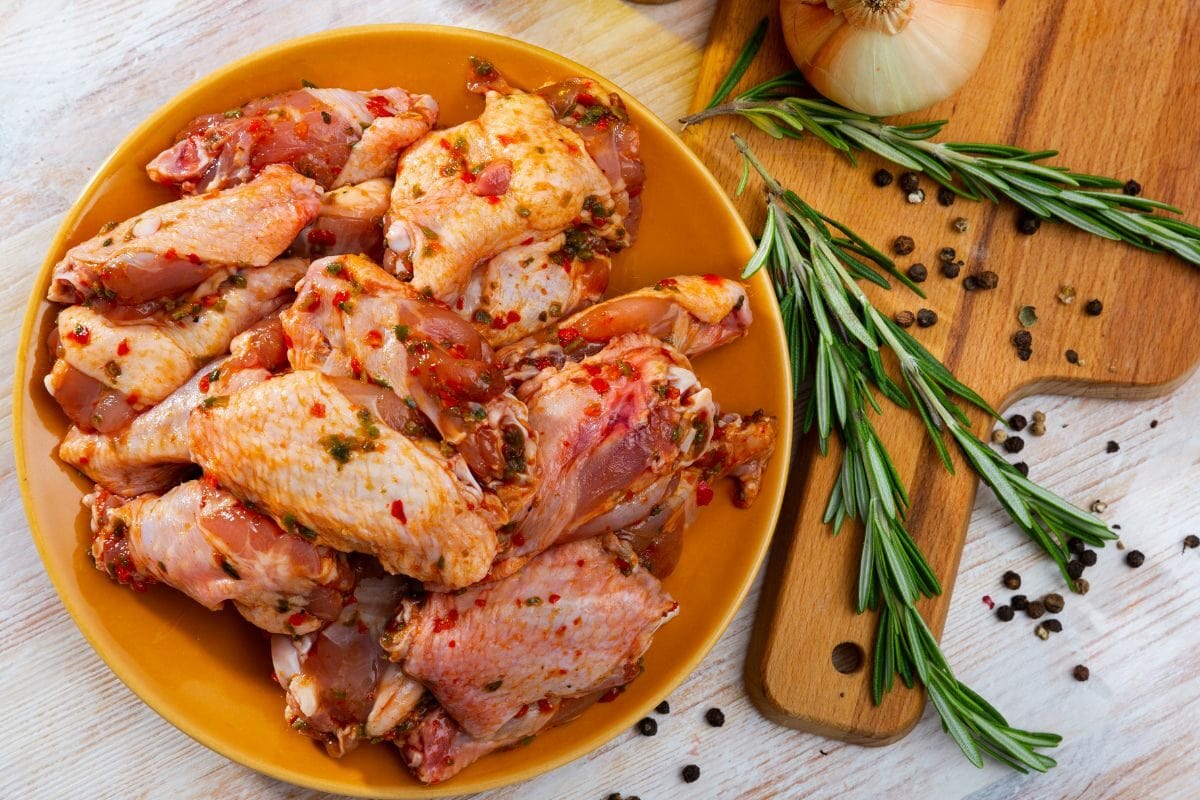
Definitely! Brining your chicken wings is totally worth it. The chicken wing brine helps infuse flavor, improve juiciness, and enhance tenderness. By soaking the wings in a brine mixture of salt, water, and optional spices or herbs, you create a magic potion that works wonders. The salt breaks down muscle fibers, allowing the meat to retain more moisture when cooked. The result? Juicy, flavorful wings that will leave you craving for more. So, don’t skip the brining step if you want truly delicious wings.
Yeah, you can, especially if you’re using wet brine. It also works for dry brine or when you just want to sprinkle the wings directly.
Tossing in a bit of baking powder to a wet or dry brine can help chicken wings get extra crispy and delicious.
Baking powder has these magical compounds that break down proteins and help those wings get a beautiful golden brown color.
So, how much baking powder are we talking about?
When you’re dealing with around 1 pound (450 grams) of chicken wings, grab yourself about one teaspoon of baking powder. Remember, don’t go crazy with the baking powder. A little sprinkle in the brine is all you need. You don’t want it to take over the flavor of the chicken wings. Just toss it in with your other seasonings in the brine. Feel free to tweak the amount based on how many wings you’re cooking and your taste preferences. It’s like giving your wings a crispy makeover. So if you’ve got some, why not give it a shot?
Yeah, it’s a smart move to give those chicken wings a rinse after brining. It helps wash away any extra salt in the overly-salted meat. So your wings don’t end up too salty. Just give them a gentle rinse under some cool or cold water, pat them dry with some paper towels, and they’re good to go. The brining process has already worked its magic on flavor and tenderness, so a quick rinse is all you need.
Brining chicken wings, whether you go wet or dry, is a total game-changer. Soaking them in a salty bath helps lock in the moisture and break down those tough muscle fibers, leaving you with tender wings to the bone. Whether you’re team wet brine or team dry brine, trust me, the extra effort is definitely worth it. So go ahead, give your wings the brining treatment, and get ready for some finger-lickin’ deliciousness!